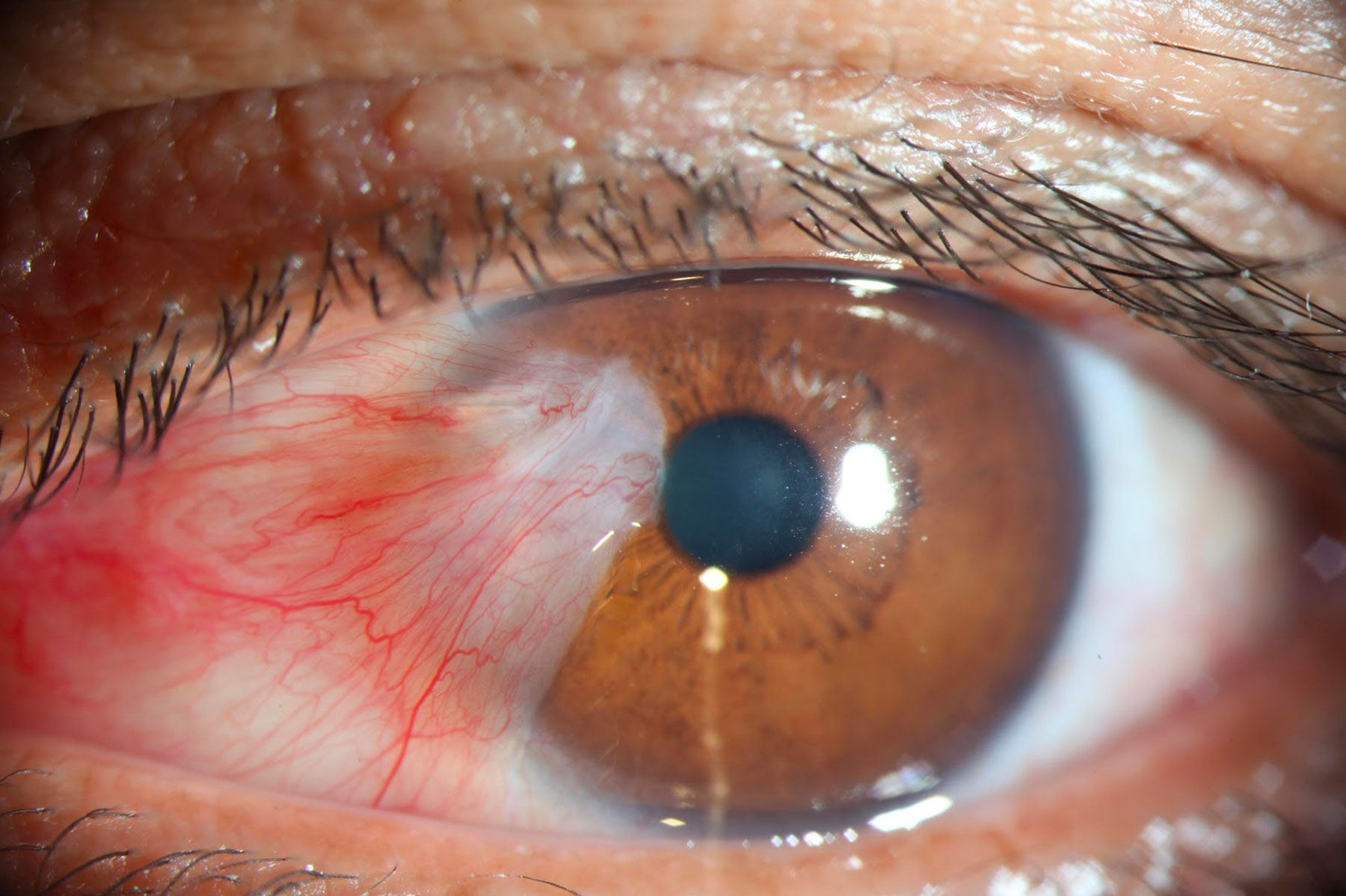Pterygium (plural pterygia) is when a wedge-shaped growth of tissue forms on the eye. It does not usually require treatment unless it is interfering with vision, is noticeably growing or causes inflammation, in which case it should be removed.
What is a pterygium?
This fairly common condition is characterised by a growth of pink, fleshy tissue on the white of the eye (sclera) that then encroaches on the cornea (clear window at the front of the eye). It usually occurs on the side of the eye closest to the nose. It is usually harmless and does not require treatment. However, if progressive and enlarging in size, it should be removed as it can eventually interfere with vision and cause significant scarring.

What are the symptoms of pterygium?
If you suffer from this condition you will be able to see a wedge-shaped growth on your eye. You will probably feel like you have something in your eye, and experience sensations such as grittiness, itchiness, burning, redness and inflammation. You may feel more discomfort when the pterygium is growing.
You may also experience blurred or distorted vision if the pterygium has grown onto your cornea to a large degree. However, reduced vision is rare in developed countries. It may occur due to growth towards the centre of the cornea or induced astigmatism.
If you think you are suffering from pterygium and would like to discuss potential treatment options, make an enquiry or call us on (02) 9452 6444.
What are the causes of pterygium?
This eye condition is caused by exposure to UV rays and dry and dusty conditions.
For this reason, it is more commonly seen in people who have lived near the equator or in very sunny places.
Pterygia are usually seen in people aged between 30 and 50, and are more common in men than in women.
What are the treatment options for pterygium?
In most cases, a stable condition is harmless and can be left untreated. If there is discomfort, this can be treated using lubricating eye drops for symptomatic relief. It is important to monitor your eye condition as it may grow and affect your vision in the future, even if it is not causing any problems at the moment. If it IS affecting your vision it will need to be surgically removed. If surgery is necessary, as with most eye surgery procedures, it can be performed under local or general anaesthetic, depending on the size and location of the pterygium and your own preference.
Your surgeon will use micro-instruments to remove the pterygium. They will then perform an autograft, using tissue from an area of normal conjunctiva to fill the gap where the pterygium was. The graft tissue is usually harvested from the area of the eye covered by the eyelid. The graft is either glued or sewn into place using micro-stitches that will dissolve within a few weeks of the surgery.
This technique, known as conjunctival autografting, is currently the most effective method of doing the surgery. It reduces the chance of the pterygium recurring to less than 2% – the most common complication associated with pterygium surgery.
All surgical procedures carry some risk. The information provided here is for general educational purposes only. Please contact Forest Eye Surgery to find out if pterygium surgery is appropriate for your individual situation.
For appointments and enquiries call (02) 9452 6444
Our rooms are open 8:30 am - 5:00 pm Monday to Friday
Unit 11, Building 7
49 Frenchs Forest Rd East
Frenchs Forest NSW 2086
info@foresteyesurgery.com.au
Phone: (02) 9452 6444
Fax: (02) 9452 6566
